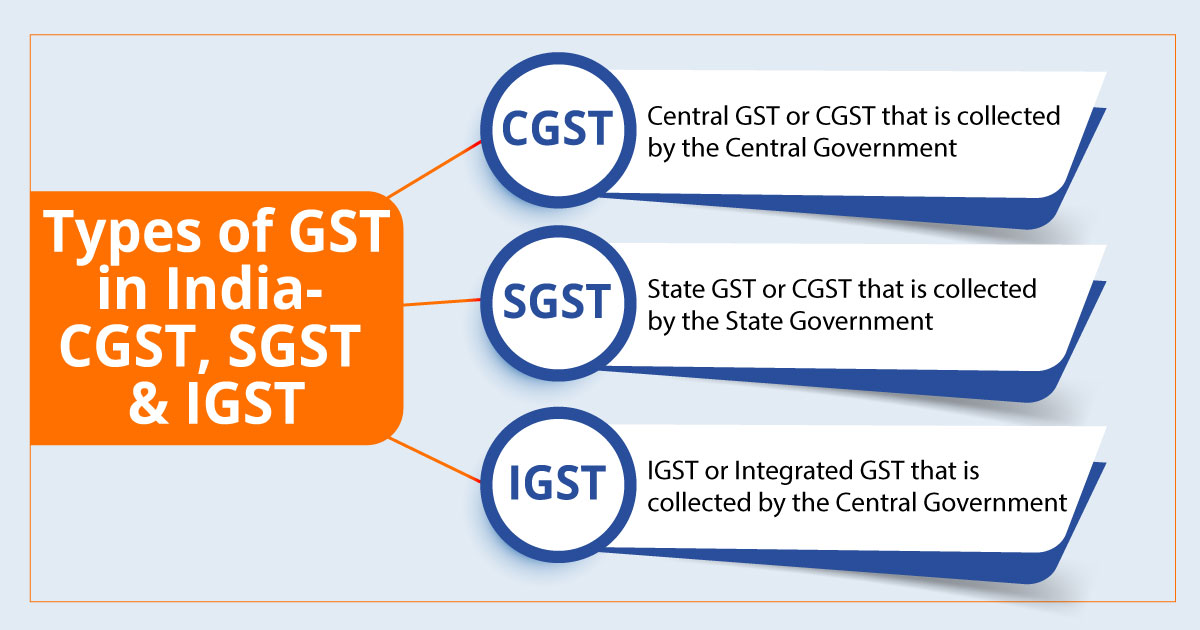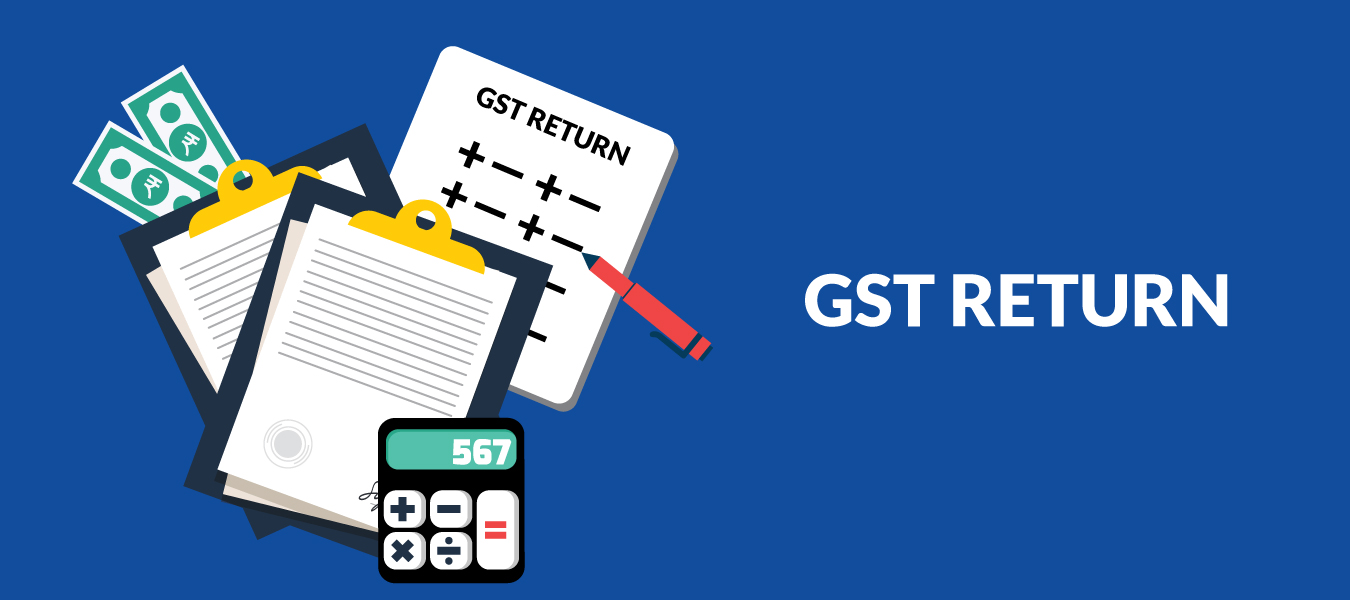Before July 2017, multiple indirect taxes were charged in India, separately managed by the Central and State governments. This led to many issues, including complicated rules, separate compliances, and cascading taxes. With the introduction of GST in India, this archaic indirect taxation system was replaced, bringing all supplies under a single tax regime.
Read further to understand what GST is, its rates and more.
You will Learn About:
What is GST?

The Goods and Service Tax is the indirect tax that is levied on the supply of goods and services throughout the country. GST is a destination-based tax, which is charged every time there is value addition in the product cycle.
Do note that destination or consumption-based taxes are levied where the goods or services are being consumed (also known as the place of supply) as opposed to origin-based taxes that are applicable where the goods or services are being produced.
Let us now learn more about GST.
Types of GST

Currently, the types of GST in India are CGST, SGST/UGST and IGST. Read further to know more about the types of GST.
- SGST or State Goods and Service Tax
SGST is levied by the state government on intra-state supplies of goods and services transactions. Collection from SGST is accounted as revenue to the state government. SGST has subsumed certain taxes such as entertainment tax, VAT, luxury tax etc. UGST, or Union Territory Goods and Service Tax, substitutes SGST in union territories like Chandigarh, Andaman and Nicobar Islands.
- CGST or Central Goods and Service Tax:
CGST is levied by the central government on intra-state supplies of goods and services transactions. Collection from CGST is accounted as revenue to the central government. It is levied with SGST or UGST, and the revenue collected is distributed between the state and the centre. With the introduction of CGST, earlier taxes, such as service tax, central sales tax, central excise duty etc., have all been subsumed.
- IGST or Integrated Goods and Service Tax
IGST is levied on the inter-state supply of goods and services. Imports and exports are also covered within the ambit of IGST. Collection from IGST will be distributed between the central and state government.
GST: What You Need to Know!
- The Goods and Service Tax is a destination-based indirect tax that is levied on the supply of goods and services.
- GST has subsumed the majority of indirect taxes levied in the country. However, excise duty on alcohol, property and stamp duty, taxes on petroleum crude, ATF & Natural Gas, diesel, and basic customs duty still do not follow under the preview of GST.
- There are 4 types of GST: CGST, SGST, UTGST, and IGST.
- As a normal taxpayer, if the supply of your goods exceeds Rs. 40 lakh (Rs. 20 lakh in special states) or services exceed Rs. 20 lakh (Rs. 10 lakh in special states), then you are required to register under GST.
- GST has simplified the taxation system and has helped to reduce tax avoidance.
Now that we have discussed what GST is, let us see who is eligible to register under this scheme.
Eligibility and registration under GST
You are required to register under GST if your annual turnover exceeds a certain threshold limit. Read below to know what those limits are.
| Place of supply (The place of delivery of goods or where the taxpayer renders service) | Turnover limit (Rs.) |
| Supply of goods in normal states | 40 lakh |
| Supply of goods in special category states (Himachal Pradesh, Jammu and Kashmir, Uttarakhand, and all north-eastern states) | 20 lakh |
| Supply of services in normal states | 20 lakh |
| Supply of services in special category states | 10 lakh |
Further, there are 3 categories under which taxpayers can get a new GST registration.
- Normal taxpayer – Is a person engaged in economic activity (trade and commerce), carries business in any part of the country, and is registered under the GST Act.
- Casual taxable person – Is a person who has no fixed place of business; however, supplies goods and services across various taxable territories in India.
- Non-resident taxable person – Is a person who occasionally undertakes transactions involving the supply of goods or services or both, whether as principal or agent, but who has no fixed place of business or residence in India.
Additionally, the following persons are also required to obtain registration under the GST regime irrespective of their threshold limit
- Every e-commerce aggregator.
- Businesses supplying products or services through e-commerce aggregators.
- All individuals who were registered under the old indirect tax regime.
- Businesses paying tax under the reverse charge mechanism.
- All agents of suppliers and distributors.
The GST registration process can be initiated online through the GST portal.
Know the GSTIN – GST Identification Number

Once you are successfully registered under the GST regime, a GST Identification Number (GSTIN) will be allotted to you. This is a unique 15-digit code based on the state of your operations and your PAN.
The benefits of GSTIN are that it allows you to claim refunds easily and simplifies the verification process. Moreover, you also become eligible to avail loans using your GSTIN.
GST Certificate
Another document that you are given upon successful registration is the GST Certificate. It contains all the details of your business as well as registration. This does not come in a physical form and is only available as a digital copy. You can download the GST certificate by logging into the GST Portal.
GST latest updates
- GST collection in July 2022 was Rs. 1,48,995 cr., up 28% from July 2021. This was the second-highest GST collection ever.
- In June 2022, the GST council removed various GST exemptions, such as that on hotel rooms up to Rs. 1,000 per night, which came into effect in July 2022.
GST Laws, Rules & Rates
GST is primarily governed by two acts – the Central Goods and Service Tax Act, 2017 and the Integrated Goods and Service Tax Act, 2017. These contain all the rules and regulations pertaining to the implementation of GST in India.
Moreover, there are multiple rules under the GST Acts. These can be subdivided into 9 main categories that are: registration, valuation, input tax credit, composition, payment, transition, invoice, return, and refund.
Talking about the rates, the GST rates in India depend on the kind of product or service being supplied. They are announced by the GST council and get revised from time to time. At present, there are 4 major tax slabs: 5%, 12%, 18%, and 28%. You can find the GST rate list on the official GST portal.
How to calculate GST
Calculating the amount of GST can be tedious as many provisions and rules must be kept in mind. This includes calculations for input tax credits, exempt supplies, and tax paid under the reverse charge mechanism.
To make this task easier, you can use online calculators. All you have to do is enter details of your supplies, the month in which you are filing the tax, details of input tax credit and reverse charge if any, and the balance of your cash ledger. With this, you will get the amount of your GST liability seamlessly.
GST Returns

GST returns are documents that contain the details of your sales, revenue, expenses, and purchases and are used by tax authorities to calculate your net tax liability. All businesses with an aggregate annual turnover of over Rs. 5 cr. must file GST returns twice every month as well as one annual return.
However, businesses with a turnover of up to Rs. 5 cr. can file GST returns under the QRMP scheme, under which only 9 returns have to be filed.
You can check your GST return status using your GSTIN on the GST portal.
GST Payments
At present, all businesses are required to pay GST online or offline every month. For a regular taxpayer, the deadline for payment is the 20th of every next month. On successful payment, a challan is generated.
GST E-Way Bill
E-way bills are used to track the goods in transit. A registered person must generate an e-way bill if the goods being transported are worth equal to or more than Rs. 50,000. The transporter is required to carry this document.
GST benefits
The benefits of GST include the following:
- It removed the cascading effect of taxes by consolidating a number of indirect taxes into one common tax and adding the provision of an input tax credit.
- The number of compliances has reduced under the GST regime.
- GST has introduced a composition scheme for small businesses.
- It has defined the treatment of e-commerce activities, allowing better regulation.
- GST has reduced instances of tax evasion in the country and aided with tax collections that add to the revenue of the government.
- GST has also helped identify and eliminate middlemen, improve the country’s overall tax system, and make it more efficient.



